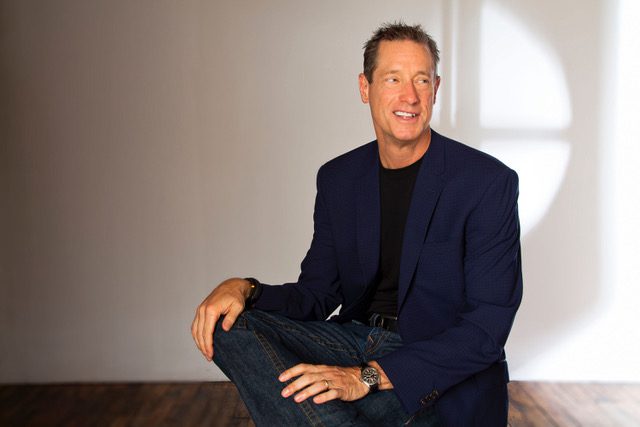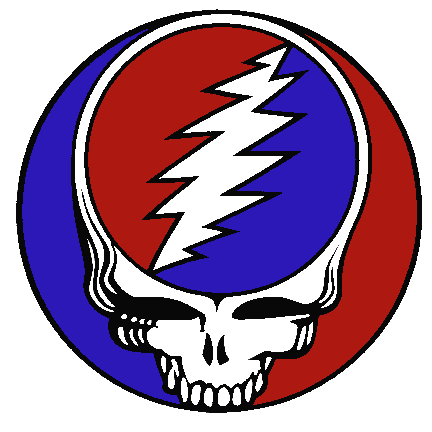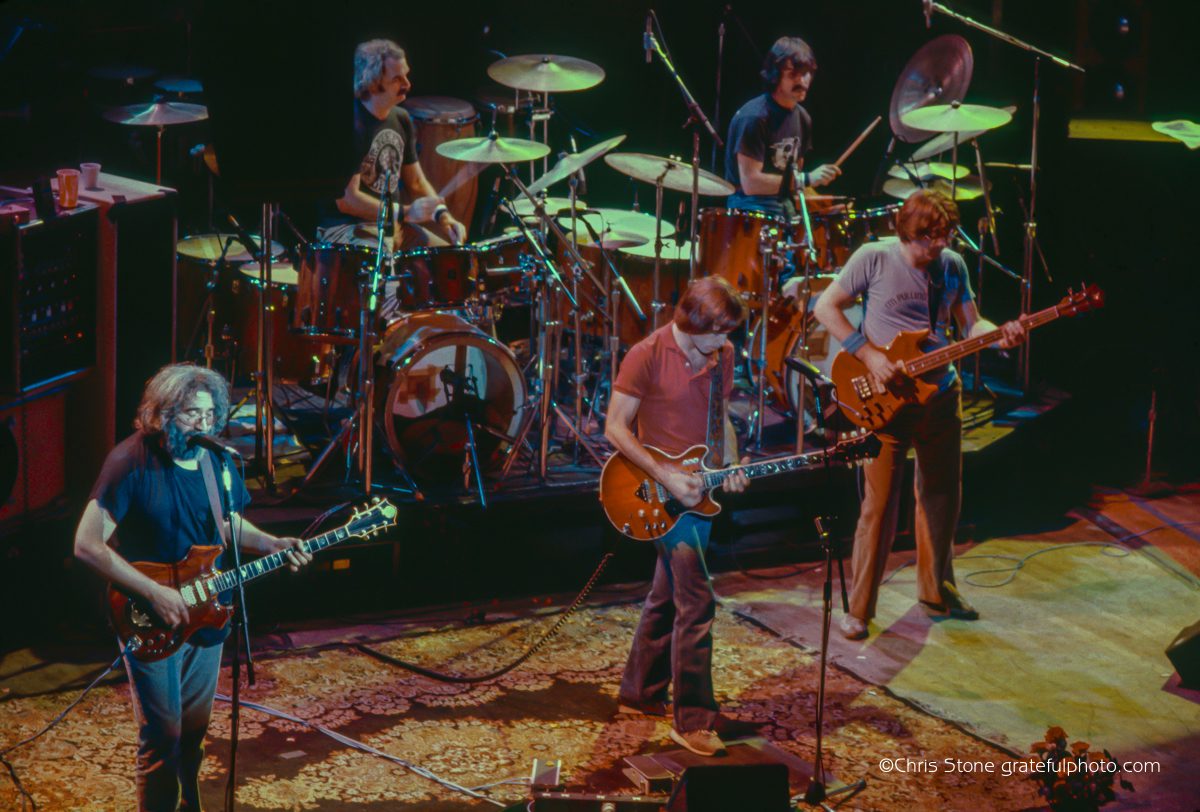Masters at cultivating a fiercely loyal fanbase decades ahead of the marketing and tech gurus of Madison Avenue and Silicon Valley, the Grateful Dead have some business wisdom to impart, even if you don’t know Bertha from Casey Jones.
“All the stars are gone but one
Morning breaks, here comes the sun
Cross the sky now, sinking fast
Show me something built to last …”
— “Built to Last,” Grateful Dead
Considering the tie-dyed troubadours known as the Grateful Dead have been playing and touring in one form or another since 1965, one could definitely say this iconic band and its spin-offs were truly “built to last.”
Certainly, there is the band’s legendary ear candy, tunes that careen across genres as diverse as bluegrass, jazz, folk, rock, funk and psychedelia, landing in rarified turf no other group of musicians can claim. Their singular sound earned the band the 57th spot on Rolling Stone magazine’s Greatest Artists of All Time list, yet amazingly, the Dead only cracked the Top 40 once. But it’s hard to think of any other band in modern history that has had such a loyal and “deadicated” fanbase. Indeed, the fans, known as “Deadheads,” are almost as famous as their musical muses.
So how did a scruffy group of performers with diverse musical chops come to command such a fervent fanbase? A critical component of the secret sauce was their inspired way of cultivating fan loyalty that was decades ahead of the marketing and tech gurus of Madison Avenue and Silicon Valley.
It’s all chronicled in a book first released in 2010, Marketing Lessons From the Grateful Dead: What Every Business Can Learn From the Most Iconic Band in History. Written by best-selling author and marketing strategist David Meerman Scott and HubSpot co-founder and CEO Brian Halligan, the book silos the 19 different ways the Grateful Dead amassed one of the greatest followings in rock history. The beauty of the book is its insightful riffs on how these practices can be put to use today by companies of any size, whether it’s a solo start-up or a Fortune 500 global behemoth.

With 2023 marking the final tour dates for Dead & Company, the band’s encore ensemble, we thought it was the perfect time to check in with Scott to get his thoughts before the Dead’s tour bus rolls off into the sunset for the last time.
EH: The Grateful Dead have been on the road for more than 50 years and your book has been out for over a decade, yet their practices and your observations are so timely. I’m particularly struck by their “freemium” model, which is such a part of marketing now. Can you elaborate?
DMS: We identified that the Dead created a social media network before Mark Zuckerberg was born. This network was based on how fans traded cassette tapes and later MP3s. Examining how this worked, we recognized two key pillars from a marketing perspective. First, they created a social network before there was a Web and two, they created content marketing by allowing fans to record their music at live shows. They even set up a “taper” section behind the mixing board so fans could set up their recording gear. Other bands would have you thrown out of a show if you tried to tape it.
We spoke to some of the band members about this and they said, “We didn’t do this because it was great marketing, we did it because it was right for the fans.” But it turned into great marketing. Because although fans weren’t allowed to sell the recordings, in dorm rooms, cars and apartments, new people were exposed to the band and a percentage became fans who would then go to shows.

EH: One element in the book speaks about “carving out your own landscape.” Can you expand on that?
DMS: So many companies will come out and say, “We are like X but better, faster, cheaper, like Uber for helicopters,” let’s say. It’s pretty rare for that kind of company to do well. But when a company says we need to solve a problem, we need to bring something no one else has, that’s a winning strategy. For example, something really hot right now is ChatGPT. It’s not a copy of anything — it’s totally original. This is like the Dead. They didn’t say we are going to be like the Stones but faster. They decided to make a form of music that hadn’t existed before — a mash-up of bluegrass, rock, jazz, psychedelic, something totally new. This is what you have to do for breakout success.
EH: Can you talk about the idea of “losing control” of your marketing message? This sounds so contrarian to marketing dogma, really disruptive, but so Grateful Dead.
DMS: I’ve spent the last 10 years studying fandom, the how and why. I’ve spoken with neuroscientists, thousands of fans, and hundreds of companies who have been successful cultivating a fan base [this became Scott’s latest book, Fanocracy — Ed.]. The takeaway is once you put your work out into universe, it doesn’t belong to you anymore, it belongs to the fans. So you have to get comfortable with the idea of giving up control.
As this relates to the Dead, their fans met in the parking lot, listened to music, partied, sold merch, they were being a tribe, all with the band’s blessing. If the band tried to police that, formally organize it, it wouldn’t have worked. Every company can learn from that. One solution is some companies create a space, then let the fans run and manage it. Microsoft’s Worldwide Partner Network comes to mind [it recently evolved into the Cloud Partner Program — Ed.].

EH: I also really like your observation that it’s more important to experiment with marketing approaches rather than worrying about making mistakes.
DMS: A great example of a small company doing this is Grain Surfboards out of Maine. They make wooden surfboards using a proprietary boat-building technique. Most companies would try and protect that as a trade secret. But Grain not only explains how they do it, you can even go to their factory and they’ll show you how to build your own. I’ve made two with them. By the way, they also crank Grateful Dead music at their shop.
EH: If you were to write the book now, are there any new elements you would add?
DMS: We would write it in a similar way, but we would probably add a chapter about what to do when you have to make changes to your team, which is what the band has had to do. It could be that you have an incredible company, but you have to bring new people in for whatever reason. What’s the solution? In the case of the Dead, they made some really unexpected choices, like bringing in John Mayer, who previously had a successful career that was more pop oriented. It’s worked out really well.
I will add one other element that involves Brian (Halligan) and I. Brian owns Jerry Garcia’s “Wolf” guitar and I own Bob Weir’s “No Fun” guitar. But rather than putting them on a wall or locking them away in a vault at the Rock & Roll Hall of Fame, we’ve organized a nonprofit where we lend the guitars to musicians who play in Grateful Dead tribute bands. Imagine what that feels like for them. We think it carries on the band’s tradition in a very Dead way. And in case you were wondering, yeah, I’ve already got tickets for five of their final shows.
Hero image: The Grateful Dead, live at the Warfield in San Francisco, Oct. 9, 1980. Photo: Chris Stone.




